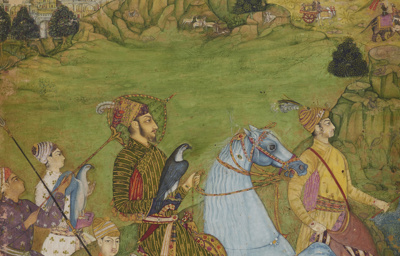The Human Figure in Islamic Art - Holy Men, Princes, and Commoners

75 masterpieces from large parts of the classical Islamic world to about 1850
The exhibition presents 75 masterpieces from large parts of the classical Islamic world to about 1850, all of them featuring human figures.
Many people believe that it is forbidden to depict human figures in the Islamic cultural sphere, or at least the Prophet Muhammad. This is a qualified truth, however. While some Muslims have criticized and even destroyed human depictions, considering them to be idols, others have from the very beginning of the Islamic era commissioned works of art with human figures as an essential element.
They appear on everything from utility ware such as ceramic dishes, inlaid metalwork, and textiles to architecture. Human figures are especially found, however, on the detailed miniature paintings that illustrate manuscripts or are independent works of art. The exhibition focuses on the different ways in which the human figure has been used in Islamic art, from an ornament and symbol to scientific diagrams, narrative illustrations, and independent paintings or drawings.
The exhibition’s works of art were mainly made for the highest social strata in the Muslim world, and a dominant theme is “The Prince and the Court,” which features both actual portraits of rulers and depictions of the princes’ public and more relaxed, private life. “The Religious Sphere” presents depictions of many of the men and women that Islam has in common with Judaism and Christianity, for example Noah, King Solomon, and Jesus and the Virgin Mary. The Prophet Muhammad is also found on several paintings, as are the many people who in later periods dedicated their lives to God.
In many cases, it is striking that there is not a great difference between how depictions of the human figure appear in the Islamic world and in the West. The theme “Love” thus presents examples of infatuation, unrequited love, erotic desire, and love of God.
All of the works on exhibit are from the museum’s own collection. Several are new acquisitions and are presented here for the first time, for example “The Dervish from Faryab Crosses the River on his Rug,” shown above.
In conjunction with the exhibition, the David Collection has published an extensive catalogue in collaboration with Strandberg Publishing.
The authors are the David Collection’s director, Kjeld von Folsach, and its senior curator, Joachim Meyer. The catalogue moreover features a chapter by Professor Jakob Skovgaard-Petersen, University of Copenhagen, who considers the human figure in the Islamic world from a modern perspective.
The catalogue can be bought in the museum shop for DKK 300.
In conjunction with the exhibition, the David Collection has published an extensive catalogue in collaboration with Strandberg Publishing. See the press release here.
Information
The exhibition will be open from November 23, 2017, to May 13, 2018.
Admission to the museum and the special exhibition is free.